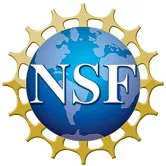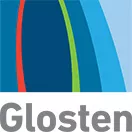Through partnerships with the Science and Math Investigative Learning Experiences (SMILE) Program, Oregon Sea Grant, the Marine Resource Management Program and the Coastal STEM Hub, the Regional Class Research Vessel (RCRV) Project is working to meet Outreach & Education goals.
The Outreach and Education Plan has three main components:
- Public Education
- Educator Professional Development and Student Engagement
- Researcher Education and Professional Development
By developing or contributing to educational programs and exhibits we hope to help the public understand the importance of the Ocean to the world, country and local communities.
Through curricula, videos and other forms of information that will be shared with educators during professional development events, we hope to increase ocean and data literacy and show K-12 students how scientific observations made at sea are the crux of understanding, discovering, tracking and predicting natural and human-impacted processes within and beyond the Ocean.
In providing professional development opportunities for researchers, we hope to build and maintain effective infrastructure services aboard each RCRV that can enable each science party to set and achieve meaningful broader outreach and education goals seamlessly and with minimal costs.
As the project progresses, so will our educator resources. Take a look at what we have:
One of the integral parts of this O&E plan was to bring onboard two OSU Marine Resource Management graduate research assistants from 2017-2020 to conduct research that focused on how to meet the overarching goal. This report shares the highlights from this research and begins to lay out the commitment of time and other resources needed to create and implement O&E that is effective (in that it improves understanding and brings together scientists, educators, and students in the pursuit of a more data-literate society) AND inclusive (in that it recognizes that O&E needs to be culturally responsive and employ strategies that engage diverse audiences).
The curriculum created by the 2020-2021 ORSEA cohort are now available on the ORSEA website. ORSEA connects math and science educators with scientists to create and pilot lessons centered around marine-focused anchoring phenomena. ORSEA supports data science education and ocean literacy, while also exposing students to a variety of marine-related careers. This project is funded by Oregon Sea Grant and the National Science Foundation through OSU's Regional Class Research Vessel Project. We are currently recruiting teachers and researchers to participate in the 2021-2022 cohort. More information and applications are also available on the website above.
Students will learn about Sound wave properties and Sound Waves and their application in SONAR. Students will enact RV Taani's SONAR system to map the seafloor. Students will qualitatively communicate the properties of waves and their application in collecting and communicating information by SONAR systems.
Ocean Careers and Holland Games
Students will learn their Holland Code, learn about their career interests and ocean careers, and discuss how ocean careers relate to science, technology, engineering and math.
Build a Boat for Scientific Research
In this lesson students will build a boat for scientific research. In the process they will learn about buoyancy, boat design, and tradeoffs to meet needs/goals (speed, stability, weight, and space).
Students will design and build a working model of a launch and recovery system from a set of everyday items. The goal is that whatever they develop has safety features that limit swinging on a moving research vessel. Systems must be able to pick up and launch/recover “scientific packages” of varying sizes and weights and safely place them into the “ocean” and bring them back aboard the vessel.
Mystery of the Disappearing Pteropods: Dude Where's My Shell
In this lesson, students must recognize and identify patterns within the population of pteropods they are studying, analyze those patterns, and then create a claim about what is happening to the pteropods population. Their teams will then be tasked with presenting that claim to ‘ODFW’ based on evidence that they collected.
Engineering a Solution to Marine Debris
Students will learn about the most prevalent type of marine debris: plastics and microplastics. Students explore a variety of ways scientists have engineered solutions to marine debris. Students will design their own trash collectors to remove marine debris from the oceans, and beaches, or prevent it from entering the waterways.
Students work in cooperative groups and participate in a hands-on activity that simulates the feeding methods of the humpback, right, and gray whales. Students collect data and construct a bar graph to compare the feeding styles of these three baleen whales, and share findings with the class.
Students talk about what the Great Pacific Garbage Patch is and how it got there. Students explore a variety of types of marine debris. Students will view a demonstration about how floating debris acts, and how ocean debris is affected by wind currents. Students play a matching game that will help them determine what types of organisms would be affected by which types of marine debris.
Students learn about the diversity of plankton and are then challenged to design a planktonic organism. The best model of a planktonic organism will sink slowly or be neutrally buoyant representing the real-world planktonic organisms. Students will watch a video and be given pictures of planktonic organisms and then be provided with simple materials to build with. After designing with their team mates, students test and race their plankton in a simulated ocean.
Students analyze popular and classical songs to understand how people use music to communicate. Students construct a graph to diagram real whale song sounds and create lyrics for whale song phrases. In addition, students will examine ways scientists capture whale songs and human sources of noise pollution in whale habitats.
In this lesson students build on their knowledge of marine debris. Students will learn that whales and other species are increasingly at risk from plastics and microplastics. Students will play an interactive game based on whale feeding strategies and whale exposure to plastic associated toxins.
Volcanoes: The Ring of Fire in the Pacific Northwest
Students will learn about the most active submarine volcano located 300 miles of the coast of Oregon — Axial Seamount. This submarine volcano is home to the first underwater research station called the Cabled Axial Seamount Array, from which researchers stream data and track underwater eruptions via fiber optic cables. Students will learn that researchers also monitor Axial Seamount using research vessels and remote operated vehicles.
The Axial Seamount: Life on a Vent
Students will learn about ecosystems at hydrothermal vents. Hydrothermal vents were only discovered in 1977, and as more vents are explored we are finding out more about the unique creatures that live there. In Life on a Vent students will learn about vent organisms, their feeding relationships, and use that information to construct a food web.
The RCRV Project also partnered with MBARI Earth 2018 workshop. They have developed several RCRV themed lessons, such as Introduction to Remote Operated Vehicles, Building your Shipwright (web quest for ocean research), and several other marine themed lessons. These lessons can be found at the link below.
Taking the Temperature of Ancient Oceans
Students will learn that ocean temperature changes affect the composition foram shells (e.g. fossils), and that scientists measure those changes to infer ancient ocean temperatures. Students will use this fossil evidence to reconstruct a model of ancient ocean temperatures of a particular research site. Students will engage in graphing, creating a mode, making predictions, and argument from evidence as they reconstruct ancient ocean temperatures and make predictions based on their findings.
A Sea of Data & Outreach Recommendations
These four lessons, three stand alone and one in-depth extension, were developed to engage high school students in ocean science data using the Next Generation Science Standards. These lessons were piloted and developed as a graduate student research related to the Regional Class Research Vessel (RCRV) Program. Included in the file is also recommendations for ocean researchers, R/V operating institutions, and other professionals who seek to engage learners, educators, and scientists in developing data driven educational outreach materials.
Visualizing Ocean Data - Jane the Glider
How can we visualize data collected by Glider Jane to understand the relationships that drive ocean mixing and circulation? Students will learn about under water gliders, engage in visualizing data collected by OSU's Glider Jane, and identify key relationships between depth, pressure, density, salinity and temperature as they support ocean circulation.
Ocean Engineering Challenge - Helping Hands at the Bottom of the Sea
How can your team design a model "Helping Hand" for a ROV that lets you grab different objects and drop them into a container/bucket that's at least two feet away from you, using the available supplies? Students will learn about ROVs and related careers, engage in the engineering of a "Helping Hand" to meet specific criteria, design, revise and redesign their "Helping Hand," and evaluate design solutions that best meet the design criteria.
Ocean Engineering Challenge - Save the Soup
How can we design a personal flotation device (PFD) for a can of soup that can be put on it by one group member in less than 20 seconds and allow it to float for more than one minute using the available supplies? Students will learn about PFDs, engage in the engineering of a PFD to meet specific criteria, design, revise, and redesign their PFDs, and evaluate design solutions that best meet the design criteria.
Undergraduate and Graduate Student Engagement
The RCRV team has a graduate student from the Marine Resource Management Program. This student is doing research by communicating with experts on the use and communication of real time data for researchers, educators and websites. This research will help to guide outreach efforts within the project. In addition, the student is doing thesis work on improving high school science students attitudes towards science and their scientific literacy. This is done by testing different types of learning activities, including a data centered learning experience.
The SMILE program engages undergraduate students in the RCRV project by incorporating them as mentors in events as well as through a partnership with the Mechanical Engineering (ME)undergraduate program. As part of their “capstone project”, a team of students were challenged to build a model launch and recovery arm that represented what will be on new research vessels. The final model was used by over 300 middle and high school students during annual engineering challenges throughout Oregon as an example from which to build their own simpler version and to launch a prototype underwater rover. Students documented their process in videos that they created for middle and high school students. Check them out here:
Mechanical Engineering Team Videos
Questions? Contact smileprogram@oregonstate.edu or OregonCoastSTEM@oregonstate.edu










